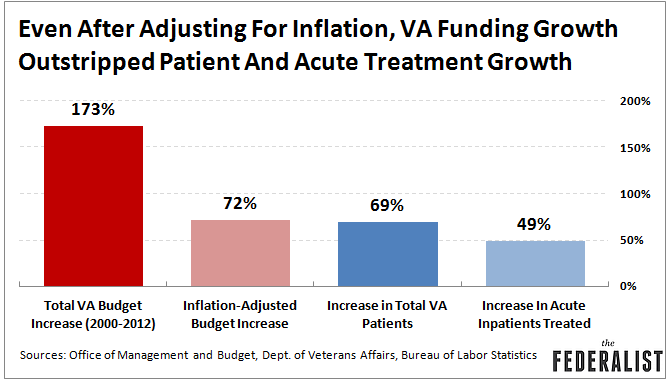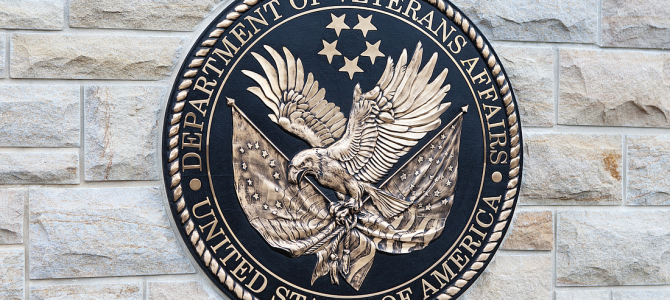In the wake of the awful details that are being slowly released about VA treatment of sick veterans, a number of people are attempting to figure out the root of the agency’s problems. Yuval Levin, a former Bush administration health adviser, explained at National Review this morning that the agency is riddled with conflicts of interest and bureaucratic inertia. Levin wrote:
Even given the lax standards of cabinet-level accountability that have characterized the last few administrations, there is no excuse for keeping Shinseki in office at this point. What appears to have happened here is far worse than a management failure. It is a pattern of exceptionally widespread, systematic, and even criminal deception throughout an agency Shinseki oversees.
Others have decided that the real problem at the VA is funding — more specifically, a lack of it. According to them, if the VA just had more money, none of this would have happened.
Dems to push funding for more VA hospitals http://t.co/HF0NGiUn29 by @alexanderbolton
— The Hill (@thehill) May 30, 2014
From The Hill:
Senate Democratic Whip Dick Durbin (D-Ill.) said Thursday that Congress needs to approve additional funding for the VA.
“Congress needs to demand the right leadership at the VA but Congress needs to provide the resources for the VA. We keep sending them new challenges, new opportunities and we’ve got to make sure they have the resources to meet them,” Durbin said in an interview with WGLT radio.
There’s only one problem: VA funding has more than kept up with both medical inflation and increased patient loads. An analysis of budget and cost data, as well as data on the total number of VA patients and the number of acute inpatients treated, shows that the VA’s budget has grown much faster than its workload. Even when you take medical inflation into account, the VA budget still grew faster than its patient base since 2000.

Between 2000 and 2012, the VA’s budget nearly tripled, rising to $124 billion from $45 billion. Even after adjusting for medical inflation, which has grown much faster than normal consumer price inflation, the VA budget increased by 72 percent between 2000 and 2012. Over that same time, the total number of VA patients increased by 69 percent, from 3.3 million in 2000 to nearly 5.6 million in 2012. According to figures contained in the departmental appendices accompanying annual Office of Management and Budget proposals, the number of acute inpatients treated by the VA increased by only 49 percent.
The VA has a whole bunch of problems, but a lack of funding ain’t one.









